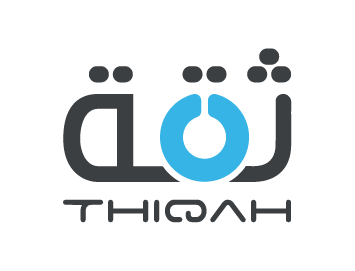“Your career is not a destination; it's a journey of continuous growth.”
In today’s fast-moving professional world, the tools that brought you success yesterday may not be enough to keep you ahead tomorrow.
New technologies, shifting industries, and evolving skill requirements demand a commitment to learning like never before.
This is where professional development becomes essential.
At its core, professional development is the ongoing process of acquiring new skills, knowledge, and experience to enhance your performance and advance your career.
Whether you're aiming for a promotion, pivoting to a new role, or simply staying relevant in your industry, it all starts with a mindset of proactive growth.
Alongside the broader idea of professional development, there’s also the more structured approach known as Continuing Professional Development (CPD).
While professional development refers to general growth activities, CPD often includes formally recognized efforts, measured in hours or points, required by many industries to maintain licensing or certification.
In this article, we’ll explore what professional development is, why it matters, how it works, and most importantly, how you can build a plan that fits your goals and lifestyle.
Balanced Score Training Center is your gateway to professional development.
What is Professional Development? (And Why It Matters)
Professional development is the ground for organizational success.
Beyond a Buzzword: The Goal of Lifelong Learning
Professional development isn't about checking boxes or waiting for your employer to offer a course.
It’s a mindset — a conscious decision to take ownership of your growth.
Instead of reacting to changes in your job, you anticipate them.
Instead of waiting for skills to become obsolete, you evolve ahead of the curve.
This proactive approach is the foundation of a successful, fulfilling career.
Understanding Continuing Professional Development (CPD)
Continuing Professional Development (CPD) is the structured, intentional form of professional growth.
It’s commonly used in regulated professions such as healthcare, engineering, education, and law, where professionals must stay current with best practices and emerging standards.
CPD is typically measured in hours, units, or points, and includes a variety of activities — from formal training and certifications to workshops, mentoring, and even reading relevant literature.
In many cases, CPD is a formal requirement enforced by licensing bodies or employers.
Enroll in our training courses in Istanbul today.
The Key Benefits: For You and Your Organization
For individuals, professional development provides:
- Enhanced job performance and confidence.
- Access to higher-level roles and increased earning potential.
- Greater adaptability and resilience in changing industries.
- Personal satisfaction from continuous learning.
For organizations, CPD and broader professional development efforts:
- Fill skill gaps and future-proof the workforce.
- Increase employee engagement and retention.
- Drive innovation by equipping teams with cutting-edge knowledge.
- Improve productivity and customer satisfaction.
Common Types and Examples of Professional Development
Professional development takes many forms — some formal, others informal — but all valuable in building your skills and confidence.
Formal Learning Opportunities
These are structured, often credentialed experiences:
- Certifications and professional qualifications relevant to your field.
- Academic degrees and continuing education from universities or colleges.
- Workshops, seminars, and conferences that offer focused training and networking.
Collaborative and Social Learning
Learning doesn’t always happen in isolation. Growth can be fueled by others through:
- Mentoring and coaching relationships, where experienced professionals guide less experienced peers.
- Peer learning groups and communities of practice, often found in companies or professional associations.
- Networking events where insights, opportunities, and collaborations emerge naturally.
Self-Directed Learning
Not all development requires formal structure. Self-driven learning includes:
- Reading industry books, articles, and journals to stay informed.
- Taking online courses through platforms like Coursera, LinkedIn Learning, or edX.
- Listening to podcasts or watching expert webinars that bring current topics to life.
How to Create Your Own Professional Development Plan (A 4-Step Framework)
A personal professional development plan gives your career direction. Here’s how to create one that’s actionable and achievable.
Step 1: Conduct a Self-Assessment & Identify Gaps
Start by evaluating where you are and where you want to be.
Ask yourself:
- What are my current strengths and skills?
- Where do I want to be in one, three, or five years?
- What skills, knowledge, or experience gaps must I bridge to reach that goal?
This helps you define your development focus — whether it’s leadership, technical skills, industry knowledge, or soft skills.
Explore our Strategic Management courses.
Step 2: Set SMART Goals
Once you’ve identified the areas to improve, turn them into SMART goals — Specific, Measurable, Achievable, Relevant, and Time-bound.
Example:
Instead of saying, "I want to improve my leadership skills," say, "I will complete a 6-week online leadership course by October to improve my ability to manage team meetings."
Setting SMART goals keeps your plan clear and trackable.
Step 3: Identify Activities and Resources
Match your goals with specific activities. For instance:
- If your goal is to improve communication skills, consider taking a public speaking course or joining a Toastmasters club.
- For a technical certification, look into online courses that fit your schedule.
Choose a blend of learning styles — formal, collaborative, and self-directed — to keep things engaging.
Step 4: Track Your Progress and Seek Feedback
A good plan is dynamic. Keep a log of your CPD activities, especially if required for licensing.
Reflect on your progress quarterly or bi-annually and adjust as needed.
Feedback is also vital. Talk to mentors, managers, or peers to gain perspective on your development and how it's translating into results.
Conclusion: Investing in Yourself is Your Greatest Asset
Professional development isn’t a one-time event. It’s a cycle: assess, plan, act, reflect — then repeat. Whether you’re navigating a new career stage or simply want to stay sharp, investing in your own growth is the smartest move you can make.
Remember the benefits:
- Personal fulfillment.
- Career advancement.
- Professional relevance.
And now, the next step is yours. Choose one skill to improve this quarter. Find one resource to get started.
The journey begins today.
Professional development is your bridge from where you are now to where you want to be.
Whether through structured CPD programs or informal learning, the key is to stay curious, stay committed, and stay growing.
Contact us and become a member of our professional training courses.
Frequently Asked Questions (FAQ)
The following FAQs expand your knowledge about professional development.
1. What is the difference between professional development and training?
Training is usually job-specific and short-term — like learning to use new software or comply with updated safety regulations.
Professional development is broader and long-term.
It includes a variety of activities that enhance your knowledge, mindset, and career trajectory over time.
2. How do I ask my employer to pay for professional development?
Come prepared with a business case. Show how the course or certification will:
- Improve your job performance.
- Address a specific skill gap in your team.
- Align with company goals.
Use clear ROI language: “This course will enable me to lead projects more efficiently, reducing turnaround time by 15%.”
3. How many CPD hours do I need?
This depends entirely on your profession and regulatory body.
For example, teachers, nurses, and engineers may require anywhere from 20 to 50 CPD hours annually.
Always check with your professional association or licensing board.
4. What are some free professional development opportunities?
There are many low- or no-cost options:
- Podcasts and YouTube webinars from industry experts.
- Free courses
- Reading blogs and articles from thought leaders in your field.
- Peer mentoring or finding a coach within your organization.
- Professional forums and online communities where discussions and resources are shared regularly.
Read more:
What Is Transformational Leadership? A Guide to Inspiring Change



















